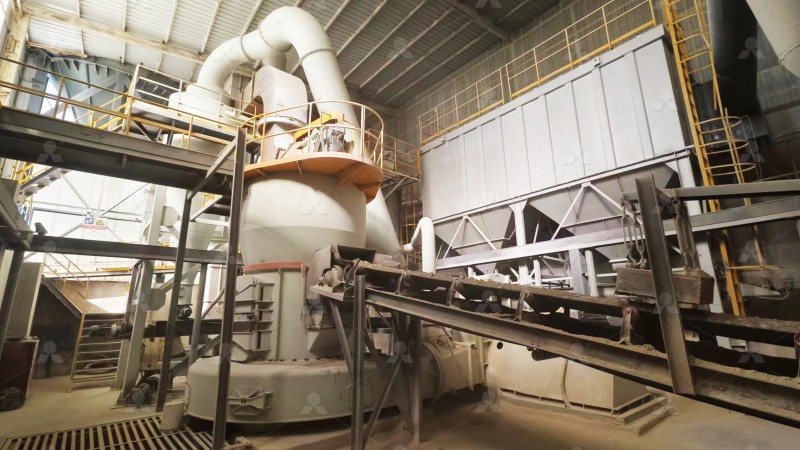High Efficiency Stone Powder Grinding Mill for Fine Powder Production
High Efficiency Stone Powder Grinding Mill for Fine Powder Production
In today’s competitive industrial landscape, achieving consistent fine powder production with optimal efficiency is paramount for businesses across multiple sectors. The right grinding equipment can significantly impact operational costs, product quality, and environmental compliance. For operations requiring ultra-fine powder between 325-2500 meshes, selecting appropriate technology becomes even more critical.

Modern grinding technology has evolved beyond simple particle size reduction to encompass comprehensive solutions that address energy consumption, environmental concerns, and operational reliability. The most advanced systems now integrate multiple processes including grinding, classifying, and conveying within a single unit, while maintaining precise control over final product specifications.
Key Considerations for Fine Powder Production
When evaluating grinding mills for fine powder applications, several factors demand careful consideration. Production capacity requirements must align with business objectives, while energy efficiency directly impacts operating costs. The ability to adjust fineness across a wide range provides operational flexibility, and environmental compliance ensures sustainable operations.
Material characteristics play a crucial role in mill selection. Hardness, moisture content, and chemical composition all influence grinding efficiency and final product quality. Additionally, maintenance requirements and spare parts availability can significantly affect long-term operational reliability and total cost of ownership.
Advanced Grinding Solutions
Among the various technologies available, the MW Ultrafine Grinding Mill stands out for specialized ultra-fine powder applications. With an input size capacity of 0-20 mm and production rates ranging from 0.5 to 25 tph, this machine addresses the needs of operations requiring precise control over particle size distribution. The integration of efficient pulse dust collection and noise reduction technologies ensures environmentally responsible operation without compromising performance.

What sets the MW series apart is its innovative approach to grinding chamber design. The absence of rolling bearings and screws within the grinding chamber eliminates common failure points, while external lubrication systems enable continuous 24-hour operation. The German-designed cage-type powder selector provides exceptional separation precision, allowing operators to fine-tune product specifications between 325-2500 meshes with screening rates achieving d97≤5μm in a single pass.
Application Versatility
The MW Ultrafine Grinding Mill demonstrates remarkable versatility across multiple material types and industries. From processing limestone, calcite, and dolomite in construction materials to handling petroleum coal, gypsum, and barite in industrial applications, the technology adapts to diverse requirements. The pharmaceutical, cosmetics, and food additive industries particularly benefit from the mill’s ability to produce consistent ultra-fine powders with minimal contamination.
For operations requiring vertical grinding solutions, the LUM Ultrafine Vertical Grinding Mill offers complementary capabilities with input sizes of 0-10 mm and capacities of 5-18 tph. This mill incorporates advanced Taiwanese grinding roller technology and German powder separation techniques, providing another option for operations with specific spatial or processing requirements.
Operational Efficiency and Sustainability
Modern grinding mills must balance production requirements with environmental responsibility. The latest designs incorporate comprehensive dust collection systems that effectively capture particulate matter, while noise reduction technologies maintain workplace comfort. Energy efficiency remains a primary focus, with advanced mills consuming significantly less power than traditional technologies while delivering higher throughput.

The digitalization of manufacturing processes has further enhanced grinding mill precision and reliability. Numerical control of critical components ensures consistent quality, while comprehensive technical support and genuine spare parts availability minimize operational disruptions. These advancements collectively contribute to reduced total cost of ownership and improved return on investment.
Frequently Asked Questions
What is the typical energy consumption reduction compared to traditional grinding mills?
The MW Ultrafine Grinding Mill reduces system energy consumption by approximately 70% compared to jet grinding mills and about 60% compared to ball grinding mills, while increasing production capacity by up to 40%.
How does the mill handle different material hardness levels?
Through adjustable grinding pressure and specialized roller/ring designs, the mill can effectively process materials with varying hardness, from soft minerals like talc to harder substances like quartz.
What maintenance intervals are typical for the grinding components?
The wear-resistant alloy grinding rollers and rings typically operate for 3,000-5,000 hours before requiring inspection or replacement, depending on material abrasiveness and operating conditions.
Can the mill handle materials with higher moisture content?
While designed primarily for dry grinding, integrated drying systems can be incorporated for materials with moisture content up to 15%, though optimal performance occurs with materials below 5% moisture.
What level of automation is available for these grinding systems?
Complete automation packages include PLC controls, remote monitoring capabilities, automatic lubrication systems, and integrated safety protocols for unmanned operation in certain configurations.
